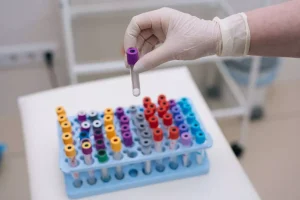Співбесіда з Node js розробником. 255 запитань для Junior, Middle і Senior
Category : IT Вакансії
Зміст
Однією з головних особливостей nodejs developer Node.js є асинхронна та подієво-орієнтована модель програмування. Замість того, щоб блокувати виконання коду під час очікування операцій введення-виведення, Node.js використовує неблокувальні операції, дозволяючи додаткам одночасно обробляти безліч запитів. Це робить Node.js дуже ефективним для створення масштабованих та чуйних серверних додатків.
Скільки замовників на біржі фрилансу?
Генерувати тестові дані, може дебажити ваш код, може допомагати вам додавати логи. Може писати документацію, додавати коментарі. Може допомагати в вашому вивченні якихось нових технологій або навіть вивченні мови.
- Слід сконцентруватися на зануренні в один конкретний фреймворк відповідно до ваших вподобань.
- Популярна, виходячи з міжнародних рейтингів, складених на основі запитів у пошукових системах, профільних форумах і рекрутингових агентствах.
- Однак програміст node js не тільки пише код.
- Їм потрібні були гроші, тому вони створили таку собі дивну структуру.
- Підтримується всіма популярними браузерами, повністю інтегрується з HTML, CSS версткою і серверною частиною, економить час і трафік, знижує навантаження на сервер.
Чому Node.js розробник потрібен вашому проєкту
Ми надаємо сайтам технічну підтримку і готуємо поновлення. Система контролю версій (VCS) — інструмент, який допомагає розробникам відстежувати розбіжності у коді з часом. Якщо ви не хочете самі шукати такого фахівця, ви завжди можете звернутися до агентство, де вже є такі фахівці. Не забувайте про soft-скіли та навички проектного менеджменту – ваш full-stack розробник повинен вміло взаємодіяти з командою. За 15 років роботи ми переконалися, що це не менш важливо, ніж hard-скіли.
Необхідні навички для Backend розробника
Наприклад, соціальна мережа, розважальний портал, банківський софт, онлайн-банк або сервіс по перегляду відео. Навіть до коду нашого сайту доклав руку веб-розробник. Це програмна платформа, яка дозволяє зробити з JavaScript мову загального призначення. Головне завдання цієї платформи – зв’язати бекенд та фронтенд, створивши єдиний продукт.
Як стати FullStack Node.js розробником
Контекстне вікно — це короткострокове вікно. В нас на сьогоднішній день немає довгострокової пам’яті моделі. І тому все, що ми говоримо моделі, воно зберігається лише в рамках одного чату. І коли ви відкриваєте новий чат, то модель про вас нічого не знає.
Хто може працювати фрилансером
Зміни підтягуються на інші сторінки автоматично. Чи ви очікували статтю з детальним описом усіх існуючих технологій з прикладами найкращих рішень коду і архітектури для кожної з них? Сприймайте статтю як простий певний зріз того, що треба взяти до уваги тим, хто ще не розуміє що вивчати, якщо хочуть займатись вебом і що хоче від розробників ринок. А ви щось очікуєте мега нереальну детальну аналітику на 80 друкованих сторінок А4, певне… Ця мова програмування, розроблена в Google, стала популярною у бекенд-розробці завдяки своїм особливостям та перевагам високої продуктивності, простоті та чистоті синтаксису та іншому. Go має у своєму наборі дуже широкий спектр бібліотек, що дозволяють створювати бекенд частину для вебзастосунків швидко та дуже зручно.
«Вибухова хвиля» від виходу величезної кількості фреймворків та бібліотек для створення вебзастосунків минула. А основні гравці в цій ніші розробки зайняли свої позиції та стабільно розвиваються й пропонують усе більше зручних і крутих інструментів для розробників. Але, поруч з тим, ми маємо новий технологічний вибух у сфері штучного інтелекту та нові й нові сервіси. Вони дають у руки розробників дуже потужні інструменти й водночас стають певною загрозою, що може залишити девелоперів без роботи (поки що точно ні 😉). Node.js став однією з найпопулярніших платформ для створення веб-серверів, API, мікросервісів та багато іншого.
Додатково застосовуються фреймворки Symfony, Codeigniter, Yii, Zend Framework, Kohana тощо. Найчастіше кар’єра frontend-розробника починається з верстальника і тестувальника. В процесі роботи вивчається HTML + CSS, далі здобуваються знання JavaScript, бібліотек і фреймворків. Потім вивчаються основні поняття побудови серверної частини, паралельно додаючи інструменти, відповідно до обраної спеціалізації. Додатково напрацьовуються навички роботи з графічними редакторами і розумінням принципів UI / UX дизайну і, звичайно ж, софт-скіли . Backend – це програмно-апаратна частина проекту, Frontend ж є клієнтською стороною призначеного для користувача інтерфейсу до програмно-апаратної частини проекту, тобто до бекенду.
Найчастіше перевагу віддають Node Js або PHP. Але що саме вибрати, у чому переваги та недоліки цих мов? Для яких проектів найкраще підходить кожен із них? Так склалося, що зовсім недавно я проводив вебінар для однієї освітньої платформи на тему «Що має знати веброзробник у 2023–2024 році?
Після опанування Express.js та Nest.js можна вивчити Koa.js, Meteor.js та Restify.js, проте це вже факультативні фреймворки. Девелопери зізнаються, що хотіли знизити поріг входження для новачків. Перехід на нову версію відбувається безболісно. Фреймворк – це структура програмних рішень, що полегшує написання коду. Наступні статті будуть з вашими побажаннями.
Цей стек має попит і в класичному сервісному та продуктовому IT, і в геймдеві. DOU опитав технічних фахівців, тимлідів і CTO та склав орієнтовний список запитань для співбесіди на посаду Node.js розробника. Це лише огляд основних навичок і знань, необхідних для становлення розробником Node.js.
Ну а закінчується робочий день здебільшого підготовкою до наступного, виконанням останніх завдань і плануванням наступних пріоритетів. Такий спеціаліст має глибоке розуміння всієї архітектури та життєвого циклу розробки програмного забезпечення, тому може керувати цілими проєктами від початку й до кінця. Обов’язкові фреймворки, якими має володіти Node.js розробник – Express.js та Nest.js. Фреймворки Node.js забезпечують структурований та ефективний спосіб створення веб-застосунків, API та функціональності на стороні сервера.
У Frontend входить відображення функціональних завдань призначеного для користувача інтерфейсу, що виконуються на стороні клієнта, а також обробка запитів користувачів. По суті, фронтенд – це все те, що бачить користувач при відкритті web-сторінки. PHP ідеально підходить для веб-сайтів будь-якої складності. Дизайн виходить адаптивним, працює на будь-якій операційній системі. Використовується для створення онлайн-спільнот.
Власне, він нам пропонує зразу ж створити індекси. Індекси – це найпростіший розв’язок для того, щоб підвищити продуктивність вашого коду. Але також є ряд інших рішень, які також прискорюють роботу вашого коду. У тому числі, там, матеріалізовані представлення. І ви можете, як Node.js Developer, виконувати з чатом ось ці ці операції. І вам не потрібно шукати сіньйора, який вам буде повністю розкладати всі кроки на шляху.
Мої контактні дані ви можете мені написати в Telegram, в Instagram, в LinkedIn з приводу ваших запитань по Prompt Engineering більш детально. У нас ще є декілька хвилин, я сподіваюсь, ми зможемо покрити якусь кількість запитань. Третя частина, вже остання, це три концепти GPT, які вам необхідно знати, щоб ефективно працювати з GPT. Це токенізація, це те, власне, як модель перетворює ваш текст на вектори, на структуру і набір цифр. Це те, наскільки чат пам’ятає вашу розмову і наскільки довго ви можете з ним спілкуватися. І останнє, це не очевидно, це його пропускна здатність.
Робота в кращіх IT командах https://wizardsdev.com/












